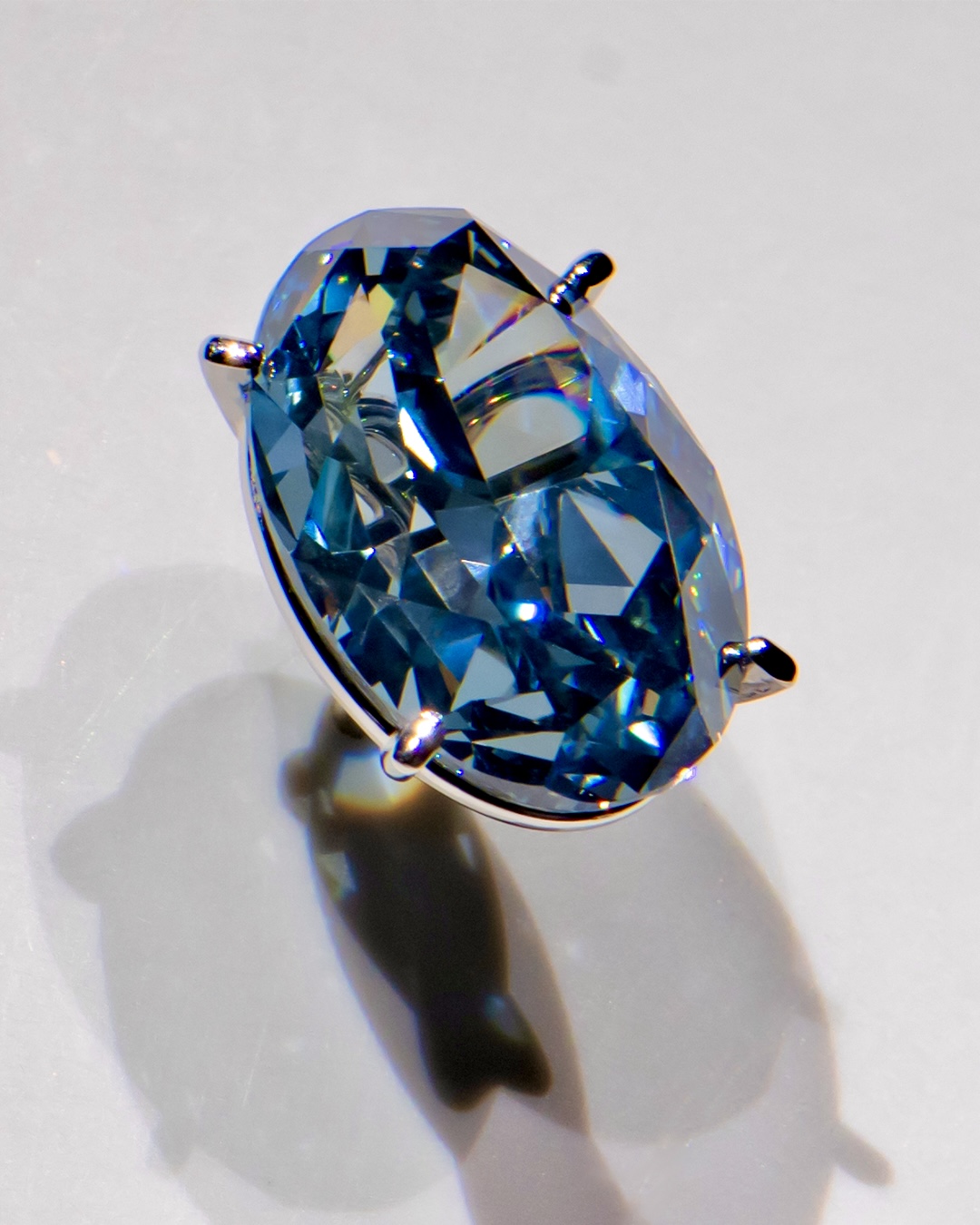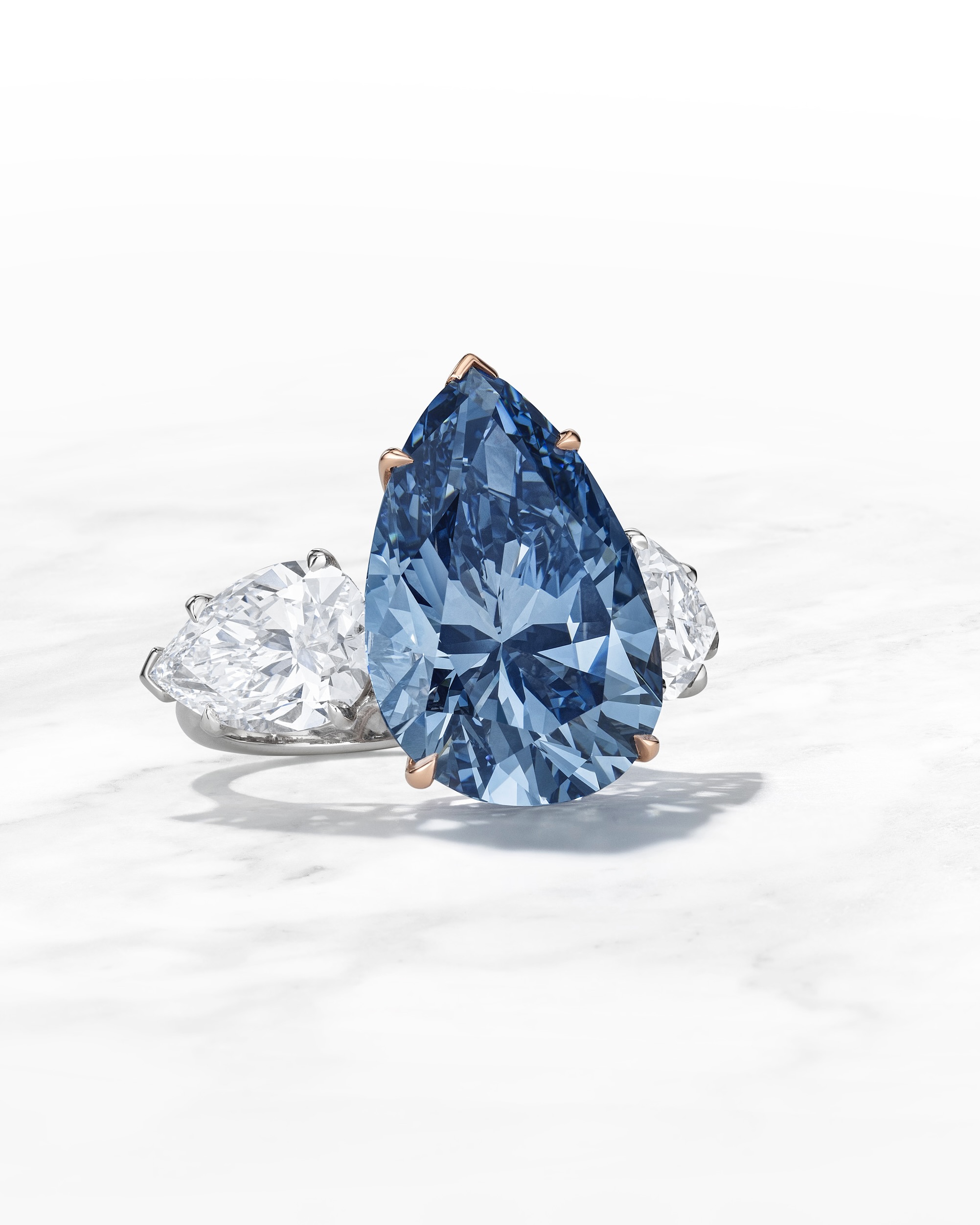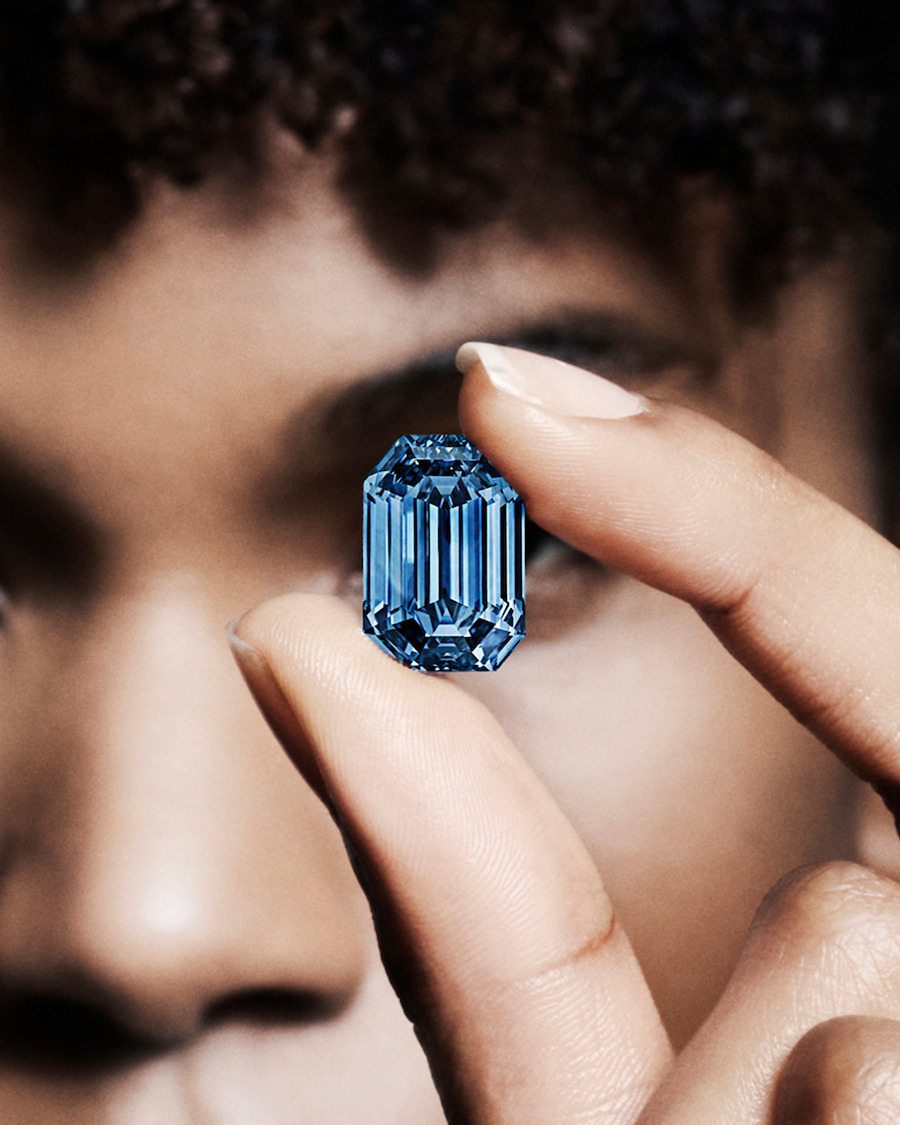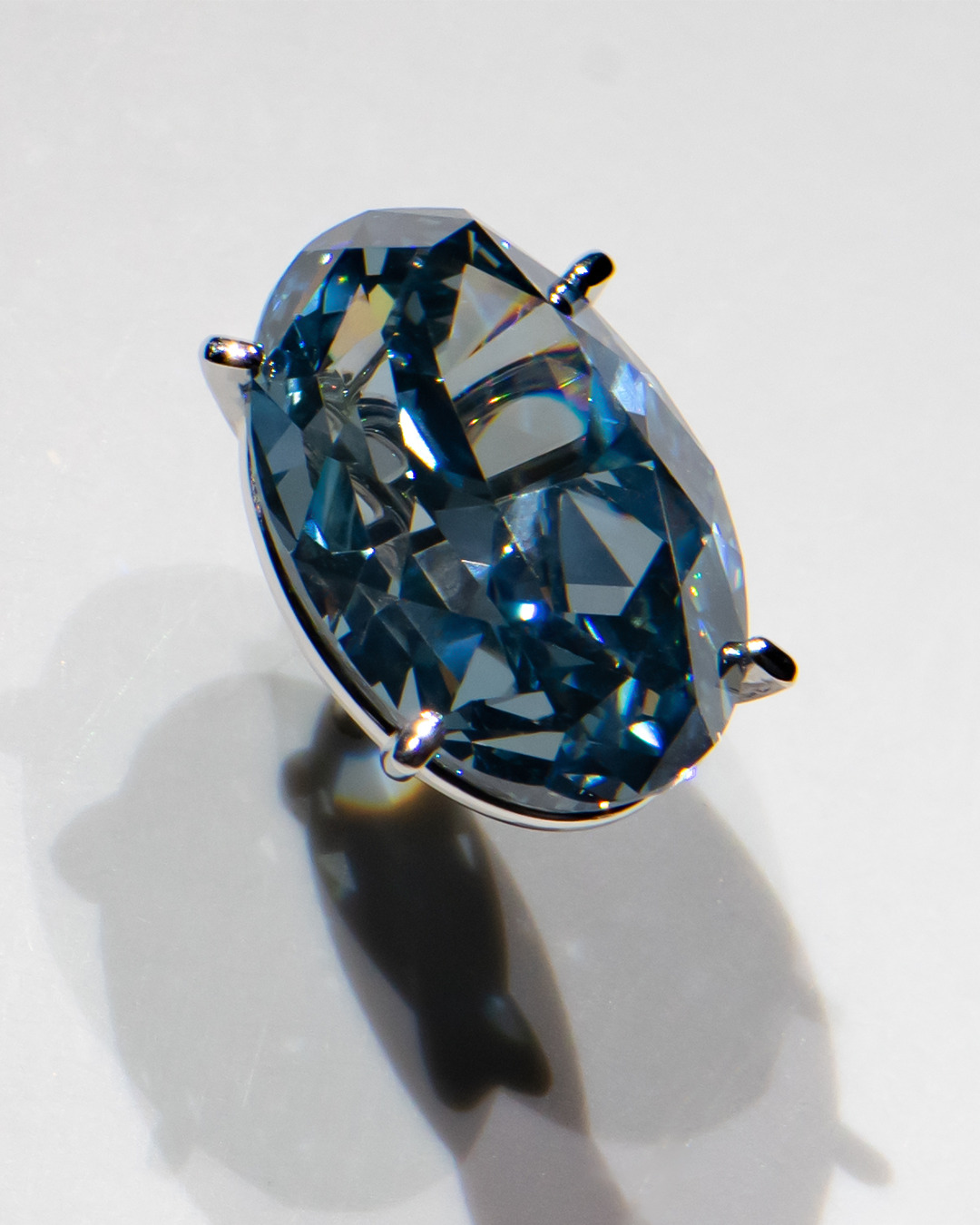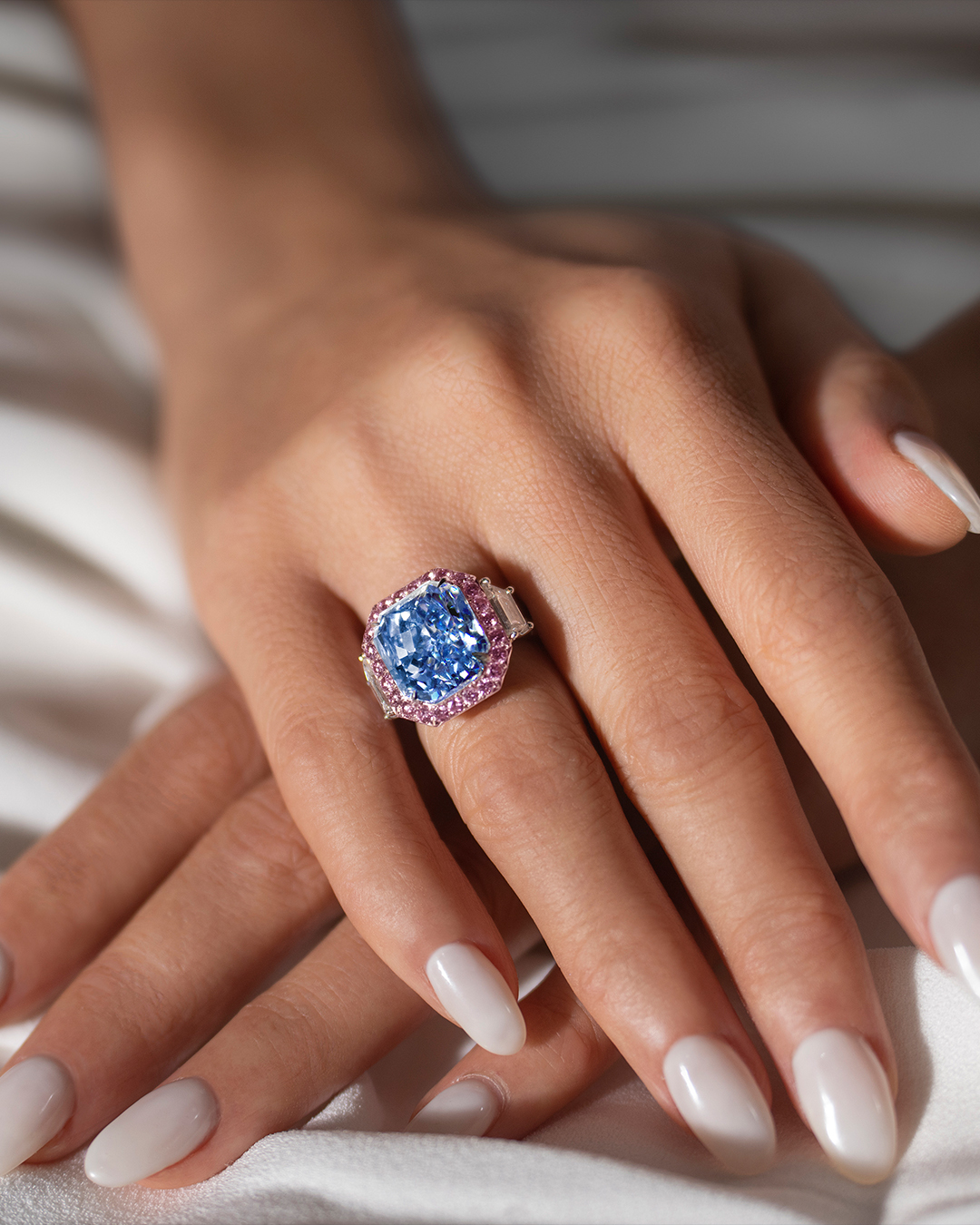Among the rarest and most revered gemstones on Earth, the blue diamond is the epitome of mystery, luxury, and timeless prestige. Its entrancing spectrum—ranging from whisper-soft sky blues to the profound depth of oceanic hues, often tinged with elegant gray undertones—has long enchanted connoisseurs, collectors, and high-jewelry maisons. Unlike their colorless counterparts, blue diamonds owe their captivating color to the trace presence of boron, a rare element that bonds with carbon under immense pressure at extraordinary depths—nearly four times deeper within the Earth than most diamonds are formed.
What Is a Blue Diamond?
A blue diamond is a natural fancy-colored diamond that exhibits a range of blue hues, from pale sky blue to deep, vivid blue. Unlike sapphires, which derive their color from corundum, blue diamonds belong to the diamond family and possess the same hardness and brilliance as colorless diamonds. Their distinctive hue results from boron impurities incorporated into their crystalline structure deep within the Earth’s mantle.
Blue diamonds are part of the fancy color diamond category, meaning their value is primarily based on color intensity rather than just clarity or carat weight. Unlike treated or lab-grown blue diamonds, which achieve their color artificially, natural blue diamonds form under rare and extreme geological conditions, making them one of nature’s most extraordinary wonders.
How Are Blue Diamonds Created?
The formation of a blue diamond is an exceptionally rare and complex process that takes place over billions of years. Unlike most diamonds, which consist purely of carbon, blue diamonds contain traces of boron, which replaces some of the carbon atoms in their structure. This interaction allows them to absorb red and yellow light, resulting in their stunning blue coloration.
The source of boron in the Earth’s mantle remains a geological mystery, adding to the intrigue surrounding blue diamonds. Scientists theorize that blue diamonds may have originated in ancient oceans, where boron-rich materials were carried into the Earth’s interior through subduction zones—regions where oceanic plates are pushed deep beneath the planet’s surface. Regardless of the exact process, the extreme combination of high pressure, heat, and boron impurities is so rare that blue diamonds remain one of the scarcest fancy-colored diamonds.
The Rarity of Blue Diamonds
Blue diamonds are exceptionally rare, with only a small fraction of the world’s diamonds exhibiting a true blue hue. While colorless diamonds are found in mines worldwide, blue diamonds are sourced from only a handful of locations, making each discovery remarkable.
Historically, the most significant source of blue diamonds has been the Cullinan Mine in South Africa, which has produced some of the world’s most famous blue diamonds. Additionally, rare blue diamonds have been unearthed in India’s Golconda region and Australia’s Argyle Mine, though their occurrences are exceedingly uncommon.
Due to their extreme scarcity, blue diamonds are among the rarest fancy-colored diamonds, ranking alongside red and pink diamonds in exclusivity. Their captivating beauty and rarity make them highly sought after by collectors and investors worldwide.
The Value of Blue Diamonds
Because of their rarity and breathtaking color, blue diamonds command some of the highest prices in the world of gemstones. Prices vary based on factors such as color intensity, carat weight, clarity, and cut, but even small blue diamonds can sell for astonishing sums at auction.
The value of a blue diamond increases significantly with its color intensity. Fancy Vivid Blue diamonds, which exhibit the deepest, most saturated hues, are the most valuable, often selling for millions per carat. Some of the most famous blue diamonds, such as the Hope Diamond, have been valued in the hundreds of millions, solidifying their status as some of the most prized investments in the world of fine gemstones.
How Blue Diamonds Are Graded
Like all fancy-colored diamonds, blue diamonds are graded based on their hue, tone, and saturation. The Gemological Institute of America (GIA) uses a classification system that includes:
- Fancy Light Blue – A delicate, soft blue hue
- Fancy Blue – A noticeable but still lighter shade
- Fancy Intense Blue – A deeper, more striking blue
- Fancy Vivid Blue – The most highly prized and valuable shade, with intense saturation and vibrant color
Some blue diamonds also exhibit secondary hues, such as grayish-blue or greenish-blue, which can influence their value. Pure blue diamonds without secondary color are the rarest and most sought after.
Famous Blue Diamonds
Among all blue diamonds, some stand out for their history, beauty, and staggering value.
The Hope Diamond
The most famous blue diamond in the world, the Hope Diamond weighs 45.52 carats and is renowned for its deep, mesmerizing blue color. Originally mined in India, this diamond has passed through royal hands and has been the subject of countless legends and myths. Today, it resides in the Smithsonian Institution in Washington, D.C., where it continues to captivate millions of visitors each year.
The Okavango Blue
Discovered in Botswana’s Orapa Mine, the Okavango Blue is a breathtaking 20.46-carat fancy deep blue diamond—one of the rarest of its kind. Named after the country’s UNESCO-listed Okavango Delta, this remarkable gem reflects Botswana’s natural beauty and ethical diamond leadership. It remains in Botswana as a national treasure, proudly showcased by the Okavango Diamond Company.
The Blue Moon Diamond
Weighing 12.03 carats, the Blue Moon Diamond is one of the most vivid and flawless blue diamonds ever discovered. It was sold at auction for $48.5 million, making it one of the most expensive diamonds per carat ever sold.
The Oppenheimer Blue
At 14.62 carats, the Oppenheimer Blue is one of the largest Fancy Vivid Blue diamonds ever sold at auction. It fetched $57.5 million in 2016, setting a record at the time for the most expensive blue diamond ever auctioned.
The Winston Blue Diamond
Weighing 13.22 carats, the Winston Blue Diamond is the largest Fancy Vivid Blue diamond ever graded by the GIA. Purchased by Harry Winston, this extraordinary gem sold for $23.8 million in 2014.
The Blue Heart Diamond
This 30.62-carat heart-shaped blue diamond is another legendary gemstone, currently housed at the Smithsonian Institution.
A blue diamond is a masterpiece of nature—an extraordinary fusion of rarity, beauty, and mystique. Born from a singular geological phenomenon, its breathtaking hue is the result of trace elements locked within the Earth for billions of years. Coveted by collectors, showcased in world-renowned museums, and set into the most exquisite high jewelry, blue diamonds command attention with their mesmerizing depth and record-breaking values. As symbols of prestige and timeless allure, they continue to captivate and inspire, standing as one of the rarest and most revered treasures in the world of fine gemstones.


